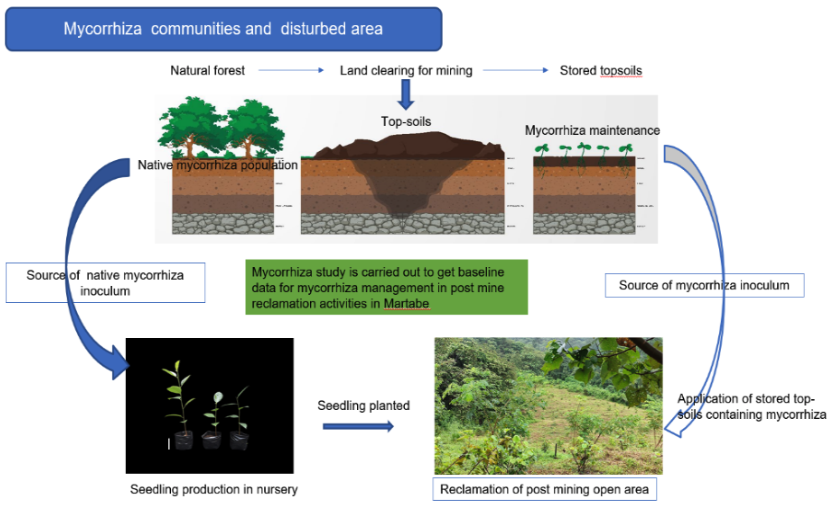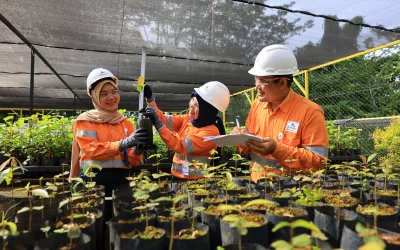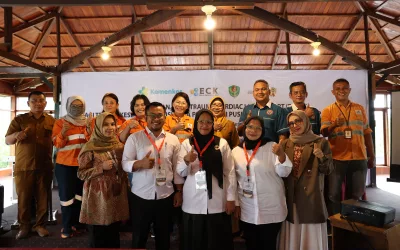Have you ever wondered why some plants thrive in less fertile soil? One key reason might lie in the microscopic organisms that coexist with plant roots, known as mycorrhizae.
Mycorrhizae represent a mutualistic symbiosis between fungi and plant roots. Imagine the plant roots as mouths searching for nutrients, while the hyphae of the mycorrhizal fungi are like thousands of tiny hands extending the reach of this search. Hyphae are fine threads that form part of the fungal body. With the assistance of hyphae, plants can absorb water and nutrients from the soil more effectively. Mycorrhizae also serve as a biological fertilizer alternative to improve, maintain, and enhance soil quality.
Enhanced Nutrient Absorption: Mycorrhizal hyphae extend the reach of plant roots in absorbing essential water and nutrients such as phosphorus, potassium, and other micronutrients.
Read Also: The Use of Mycorrhiza Improves Reclamation Quality in the Martabe Gold Mine Area
Soil Structure Improvement: Mycorrhizae help improve soil structure, making it looser and better aerated.
Disease Protection: Mycorrhizae can protect plants from root diseases and enhance their resilience to extreme environmental conditions.
Improved Plant Growth: With sufficient nutrients and protection from diseases, plants can grow healthier and more productively.
Mining areas, such as those at the Martabe Gold Mine, often have soil with high acidity levels. Acidic soil lacks nutrients. The use of mycorrhizae can help improve these soil conditions, allowing reclamation plants to thrive.
Mycorrhizae form special structures within plant roots called arbuscules. These arbuscules serve as sites for nutrient exchange between the fungi and the plants. Additionally, mycorrhizal hyphae produce substances that stimulate root growth and enhance the activity of beneficial soil microorganisms.
Read Also: Discussing Mycorrhiza, Agincourt Resources Supported the National ESG Seminar
Generally, mycorrhizae can be categorized into two main types: Endomycorrhizae, which live inside the plant root cells, and Ectomycorrhizae, which live on the surface of plant roots and form sheath-like structures around the roots.
In developing and researching mycorrhizae at the Martabe Gold Mine, Agincourt Resources collaborates with the Department of Biology, Faculty of Mathematics and Natural Sciences, IPB University. Prof. Dr. Ir. Nampiah has been officially inaugurated as a Professor of IPB University, through his scientific oration “Indigenous Fungi of Indonesia: Diversity and Bioprospects in the Fields of Forestry, Agriculture, and Health,” last year. This research explores the potential of arbuscular mycorrhizal fungi for mining land reclamation.
This research has demonstrated that the addition of mycorrhizae can influence crucial parameters in plant growth, including seedling height, stem diameter measurement, leaf number growth observation, seedling biomass, shoot-root ratio, and seedling quality index.
Mycorrhizae are true partners for plants. Their presence can enhance plant growth and productivity, especially in less favorable soil conditions. By understanding the importance of mycorrhizae, we can harness their benefits to improve agricultural quality and the environment.







